Spotlight on Thierry Bigaignon
Apr 20, 2012
Originally published 04/22/2012
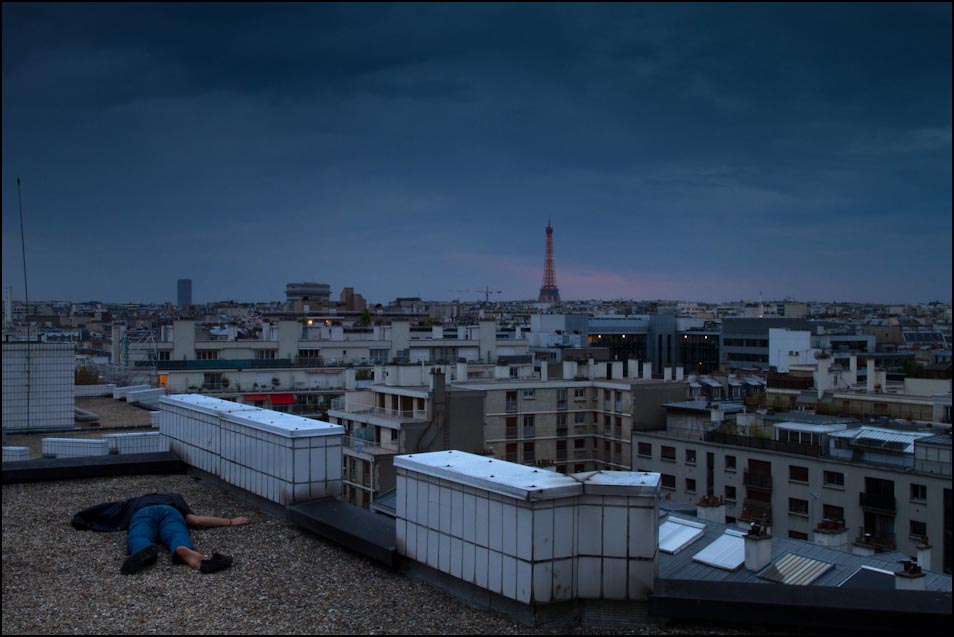
TID:
What an unusual image, please tell us a little about it.
THIERRY:
This image is one of a series of 12 that is aimed at making us think. The series is called ERGO VIVO, which means, "Thus I live" in Latin.
The foreground of the scene shows a building's rooftop with a dead body. It is supposed to be creepy, sad or even depressing, while the background should bring to mind nice feelings as we recognize the Eiffel Tower in Paris, the most visited city in the world, renowned for its romantic setting. I believe the contrast has the power to strengthen the image and its impact.
There is a non-identified, unanimated body on the ground with a shoe taken off (as if something terrible and unplanned had happened to him). Is he dead one may ask? Who is he anyway? Is he me? Is he a representation of you? Of us?
If the viewer begins to ask him/herself some questions, then I have reached my first goal.
TID:
Before we get to the image, I want to go back a little. You have told me that you started photography years ago when you were feeling a little down.
THIERRY:
Yes. I'm an entrepreneur and I had just lost 90% of my clients in a few days due to the Lehman Brothers’ bankruptcy and resulting worldwide financial crises. It was a tough time, very tough. I almost lost my company. I lost my working office and I had to fire all my employees. I had to go back home to work like a beginner. It made me feel deeply sad. I felt like such a failure. It was like I had lost it all.
All my life I had worked hard to rise, to escape from my social condition and I had succeeded in many ways. But suddenly, because of some guys on Wall Street, here I was sitting alone at my little desk at home. That’s when I knew I had to do something else, express myself in some other way and free the other side of my brain, the creative side.
I went to New York and attended many courses from the International Center for Photography (ICP). It was a magical time that allowed me to calm down and helped my anxiety to fade away. I learned a lot about the craft of photography. I learned a lot about people, too. I met great teachers and students alike; I discovered a lot about myself. Apart from gaining a deep passion for photography, I realized the type of images I wanted to make, or perhaps, the kinds of images I did not want to make.
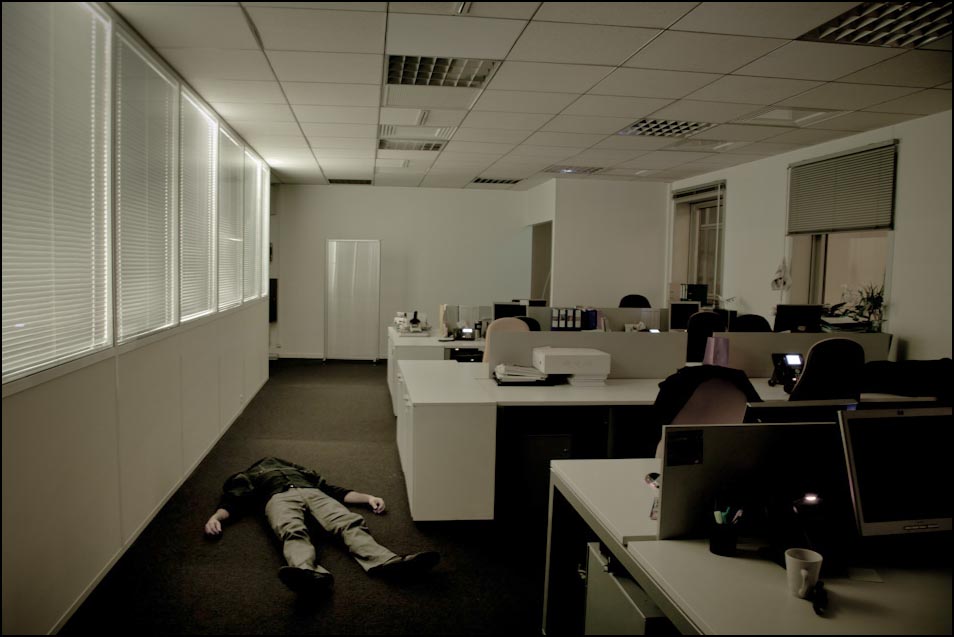
Street photography was not for me, nor was landscape or wildlife, and even less, studio photography. Instead, I realized I needed to master every aspect of my images, like a movie director would do. The same way I always tried to master every aspect of my life. My work had to carry some kind of messages too, some inner feelings, some of the things that concern me deeply, images well thought through. Impassioned by philosophy all my life, I also wanted and needed to connect those two passions together.
When I returned to France, I started to work on a series, which was going to be called “Ergo Vivo." I’ve always written down quotes from great thinkers. These inspire me a great deal, especially when I can totally relate to a quote from my personal life. One morning, I came across a quote from French writer Albert Camus that said (in French): "L'angoisse de la mort est un luxe qui touche beaucoup plus l'oisif que le travailleur, asphyxié par sa propre tâche." Translated as: "The fear of death is a luxury that only the idler can afford."
Because I had spent a great deal of time in idle and had thought about death on many occasions, that quote and its inner truth amazed me, hit me, moved me. At that precise moment, I felt it was time for me to get out, do what I had learned in New York and make a series based on that quote. However, the series had to be one with positive moral to it. The title then came along: “Ergo Vivo” (an extension from the famous Descartes quote “Dubito ergo cogito, cogito ergo sum” (“I doubt thus I think, I think thus I am”).
TID:
You mentioned that you wanted your work to carry some sort of message. Why do you feel this way?
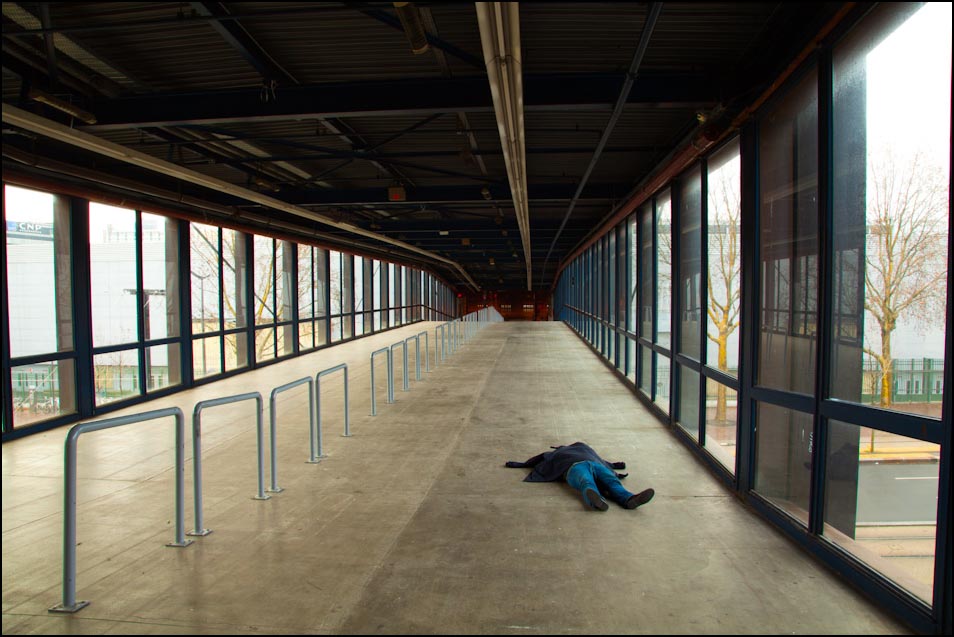
THIERRY:
It's not so easy to answer without going into deep psychological thoughts and a discussion about the process. However, what I can say is that I feel the need to send out a message in order to be understood. To do that I need to express my inner self. So why is it so important for me to be understood? Well, I'd simply say it's a kind of quest for love! Everyone has his/her own way of doing that, but I strongly believe we all do need to feel love (at all times) and I think most of the things we do or make are itself a quest for love.
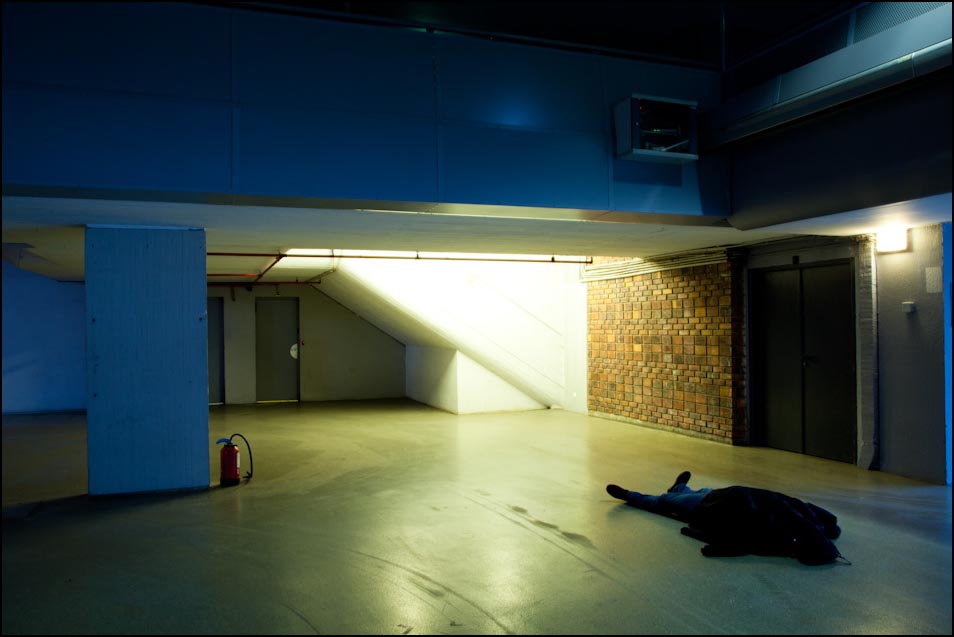
Once a teacher told me, "It's not about taking a picture but about making one." That can be seen as obvious to some, but it is just so true to me. Photographers, like any other artists, want and need to create, to make something. I believe there is always a message attached to a creation, whether this message is obvious or hidden. In my photographs, and particularly in this series, the message is both. It is obvious if you read the introductory quote of the series by Albert Camus (and maybe by just reading the title of the series itself), but hidden too if you just look at the image as it is presented to you. Once again, there is a little contrast here and I like that.
I decided to base my reflections on our behaviors, our speedy lives and consequently on the fact that we can no longer afford to be idle, as well as not fear death. But I ask: is it a good thing not to fear death? Should we not hit pause from time to time, should we not cease all of our undertakings and focus on the essential aspects of life? To this question, I try to respond with a strong, "Yes." If we could take the time to think about important issues, we would come out with equally important answers to our problems. It is sometimes worth to think about death in order to appreciate the real beauty of life. That's where the series title comes into play, "Ergo Vivo," or rather, "cogito, ergo vivo." I think (about it), thus I live!
The images express that need to settle down, to look at the horizon and think. In order to "touch" the ones who will be looking at it, I felt I needed to enhance the impression of that man being dead - but he is not! He's in fact doing what I feel we should all do in order to realize how lucky we are: to think!
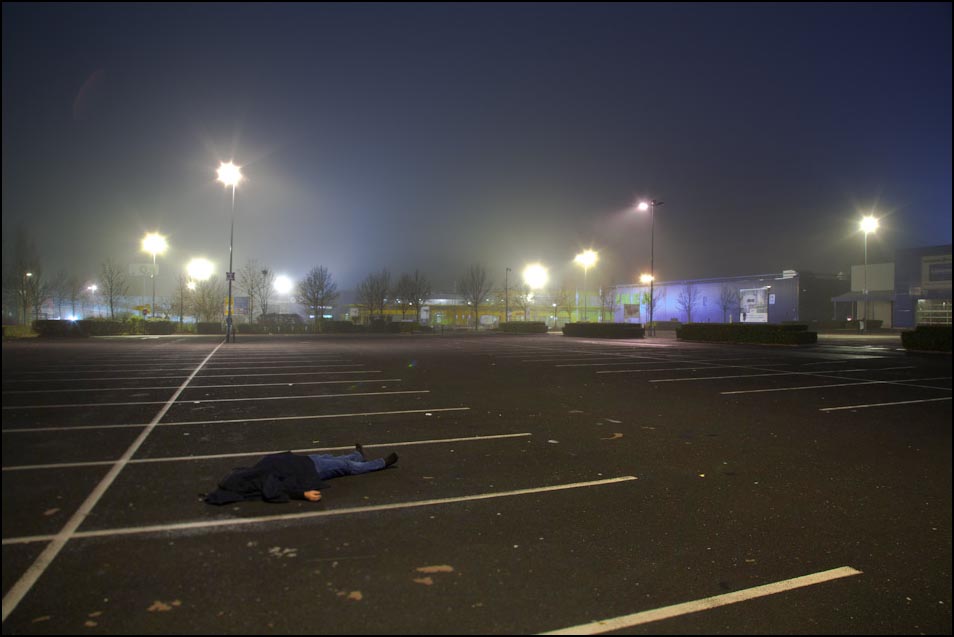
TID:
What do you look for when making these images:
THIERRY:
I look for suitable locations to shoot those images (that can take very long as I am very demanding. The location needs to be almost exactly as I pictured it in my mind), then once a specific location has been chosen for an image, I stay there for a while (up to half an hour) to imagine the final image (where should I stand, how high, where should the model be, what time of the day should I shoot, etc.). Then I book models (friends or use myself as one in which case I am the only one on location). At that point, the shooting session only takes 10-15 minutes as everything had been worked out before.
I also try to sketch things out very quickly as an image pops into my mind. Then when I think I have enough images to compile a coherent body of work, I decide to call it a series and start fine-tuning things in mind (coherence, lines, shapes, colors, message, name, etc.)
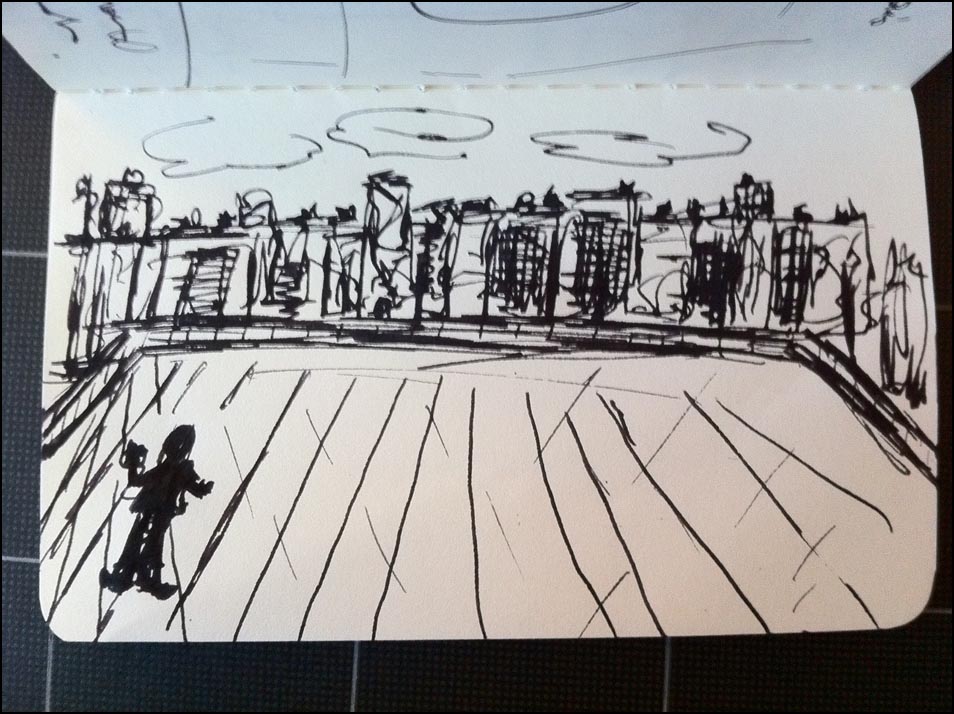
TID:
Now, onto the image itself. Please tell us about it in more detail.
THIERRY:
The image itself was taken on a rainy summer day. Once I had found the right rooftop and got the authorization to shoot on it, I had planned on a particular day. When that day arrived, I realized the weather was not good, not as I had wished it to be. I knew exactly what I wanted to do, but the rain and wind made me doubt my positioning. I tried a few other positions, trying to avoid the rain on my lens. I even tried to shoot my brother's girlfriend as I thought a woman could have even more "contrast." Finally after 15 minutes of harsh condition, I decided a few things:
- The weather was actually great because it brought me a "weird" sky.
- The image had to star a man because the scenery/backgroud (with the Eiffel tower, the sky, the colors) was too beautiful. Having a beautiful woman on the floor and before such a beautiful landscape would have diminished the contrast.
- I had to stick to my original idea of where to place the man. It worked best in terms of wishful impact and also because I usually believe the best ideas are the ones that come to mind first.
The other images were made in a similar way, with care and attention, and notably with long shutter speeds. I wanted to impose on myself exactly what the subject asks us to do: to slow down! In fact, should I have had the necessary financial means, I would have used a large format camera as I believe it would best suit the way I like to work. Even though I don't have this kind of equipment, I "pretend" to work with a large format. I always use a tripod and a shutter cable release.
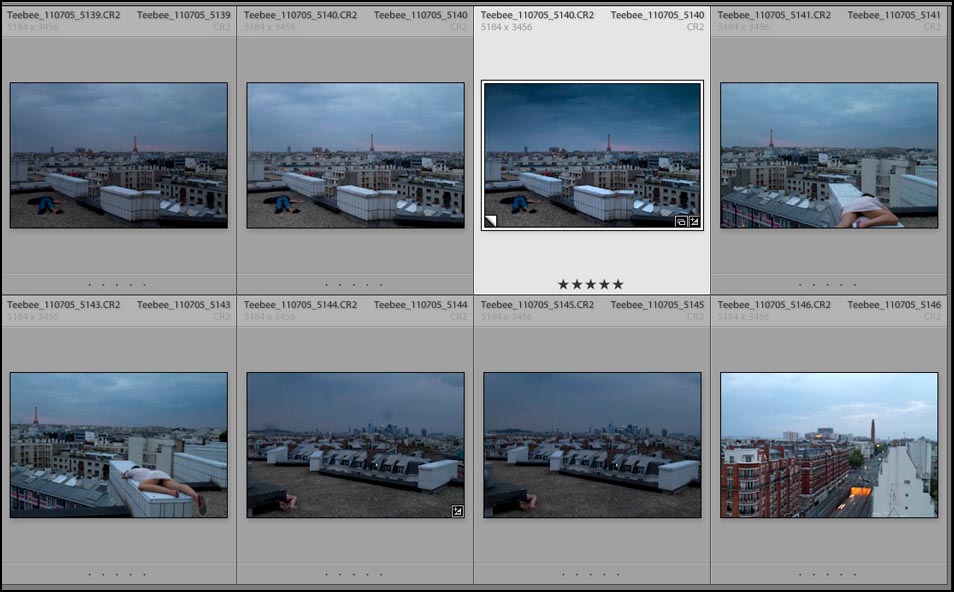
The composition of these images also share a common feature: they have strong vertical lines intersected by strong horizontal lines - to me this represents the necessary times of pause, of quiet and floating moments.
TID:
What have you learned about yourself in the making of these images?
THIERRY:
I realized with this series the way I wanted to work. I learned that photography was an extension of myself, that my images were an extension of my brain. The messages contained in the images were an extension of my personality.
TID:
What have you learned about others?
THIERRY:
Let's be honest, not much! For the moment, my photography is probably too self-centered in the way that it is a means to express myself and not a means to describe others, other people's state of mind, other people's worries and thoughts. But your question triggers some more questions in my mind... and I may change that in the future!
TID:
What advice do you have for photographers doing this kind of work?
THIERRY:
I believe in spontaneity but also in thinking things through. That may seem contradictory but it is in fact complementary. I would advise photographers to be faithful to the first images that come to their mind. Think hard about them and work on them as much as necessary to get the desired image. I am not sure I succeeded here, but I'm sure I tried my best.
BIO:
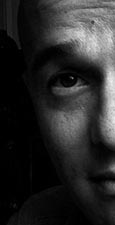 Thierry Bigaignon, born in 1972, is a French artist who currently lives in Paris. He attended the renowned International Center of Photography school in New York City and followed such classes as the ones given by color master Joel Meyerowitz and Coney Island specialist Harvey Stein. Like some of his contemporaries, Thierry needs to fully keep every aspect of his images under tight control to work and deliver his messages. Graduated in History and Politics (London Metropolitan University), Thierry is also very attracted by social, philosophical or political themes such as citizenship, loneliness, religion, old age, working conditions, etc.
Thierry Bigaignon, born in 1972, is a French artist who currently lives in Paris. He attended the renowned International Center of Photography school in New York City and followed such classes as the ones given by color master Joel Meyerowitz and Coney Island specialist Harvey Stein. Like some of his contemporaries, Thierry needs to fully keep every aspect of his images under tight control to work and deliver his messages. Graduated in History and Politics (London Metropolitan University), Thierry is also very attracted by social, philosophical or political themes such as citizenship, loneliness, religion, old age, working conditions, etc.

You can view his work here:
Next week we'll take a look at this striking portrait by Gary Cosby:
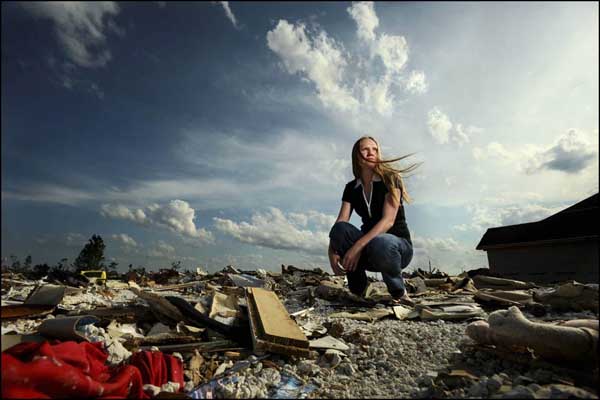
If you have any suggestions or if you want to interview someone for the blog, contact Ross Taylor or Logan Mock-Bunting.